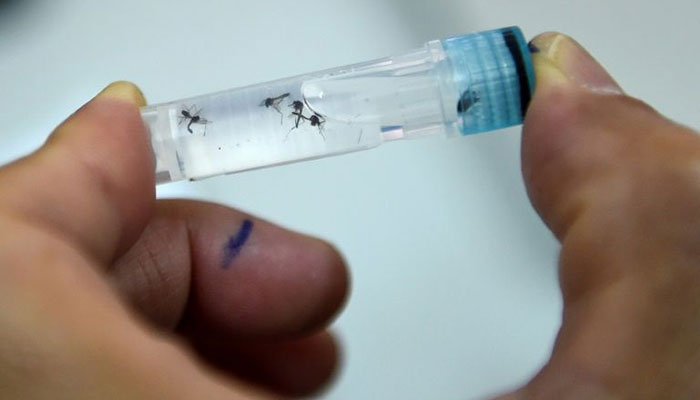What is dengue and why is it so widespread this year?
Dengue outbreaks have ravaged Southeast Asia this year infecting hundreds of thousands
September 10, 2019

Dubbed "breakbone fever", dengue is one of the world's leading mosquito-borne illnesses and infects tens of millions across the globe annually.
Around half of the planet's population live in at-risk areas, mainly in Latin America, Africa and Asia.
Outbreaks have ravaged Southeast Asia this year, infecting hundreds of thousands, killing hundreds, and crippling health care systems as governments struggle to contain the untreatable virus.
So what is dengue, how does it spread, and how can it be contained?
How does Dengue spread?
Dengue is transmitted mainly by the Aedes Aegypti mosquito, which thrives in densely-populated tropical climates and breed in stagnant pools of water.
The mosquitoes pick up the virus from infected humans — even asymptomatic ones — and pass it along to other people through bites.
Infections have steadily climbed across the globe since the 1970s due to rising temperatures and irregular monsoon rains linked to climate change, which allow for ideal mosquito breeding conditions.
Dengue is mostly found in crowded areas, and breakneck urbanisation across the globe has helped the virus thrive, especially in fast-growing mega-cities like Manila, Rio de Janeiro, Ho Chi Minh City and Tegucigalpa.
A massive boom in international travel and trade has also expanded dengue's footprint, allowing the virus to be carried across the globe in a matter of hours and unleashed in new communities.
Experts say the widespread adoption of plastic is also to blame — storage containers, discarded takeout boxes, backyard pools, plant pots and cooking urns all collect water — a problem made worse during dry spells.
"When you have a drought, people collect water in containers. That is one place the dengue mosquito loves to breed," said Gawrie Loku Galappaththy, a dengue specialist with the World Health Organization in the Philippines.
What does it feel like?
Its grim nickname comes from the disease's intense flu-like symptoms: severe headache, pain behind the eyes, full-body aches, high fever, nausea, vomiting, swollen glands or rash.
It's most serious — and deadly — in children, especially young girls though scientists don't know why.
Contracting one of dengue's four strains gives immunity only to that particular one — which is why adults in endemic areas are often safe because they've likely had it before.
But later picking up a different strain, called a serotype, usually causes a worse infection than the first time.
With no known treatment for dengue, doctors can only help to ease the virus' brutal symptoms, which can last weeks and often renders patients completely immobile.
Why have cases spiked this year?
Once confined mostly to cities in tropical climates, dengue is now found in at least 125 countries across the world, with around 100 million infected every year and some four billion people living in dengue-prone areas, according to the journal Nature Microbiology.
The disease is cyclical — dramatic outbreaks occur every few years — but climate change is believed to have contributed to a spike in cases in 2019, with July clocked as the warmest on record.
"Extremely warm temperatures we've seen this year" likely facilitated its spread, Rachel Lowe, assistant professor at the London School of Hygiene & Tropical Medicine, told AFP since mosquitoes thrive in warm weather climates.
Several European countries where dengue was once marginal have seen outbreaks, while Latin American countries including Brazil, Colombia, Honduras and Nicaragua are tackling a surge in cases.
How can it be contained?
In Southeast Asia, insecticide fogging is commonly used to kill mosquitoes off, but they usually return after a few days, and insects can quickly become resistant to the chemicals.
A controversial vaccine developed by French pharmaceutical firm Sanofi Pasteur has been greenlit for use in 21 countries and the European Union — but it's far from perfect.
The vaccine, called Dengvaxia, requires three doses, and should only be given to people above the age of nine — the maximum age varies by country — who have been previously infected by dengue.
In 2016 the Philippines was one of the first countries to use Dengvaxia in a mass immunisation programme, but its fumbled rollout has been blamed for the deaths of dozens of children and led to its eventual ban.
Several countries are also trialling the so-called Wolbachia method, and though it's too early to say if the approach works on a large scale, early results are promising.
Mosquitoes are infected with the naturally-occurring Wolbachia bacteria — which is mostly dengue-resistant — and are released to repopulate wild mosquito colonies to reduce disease transmission.











